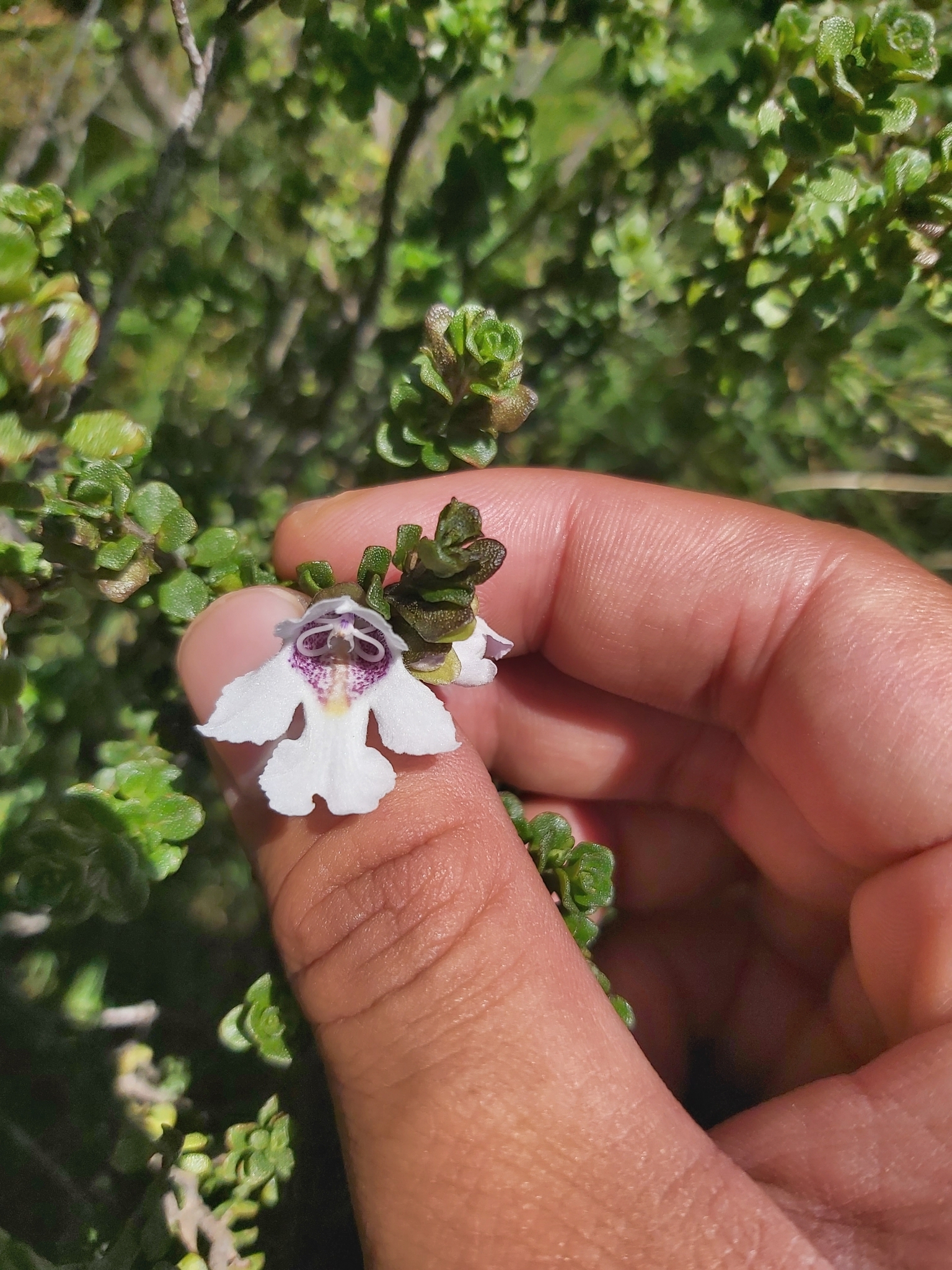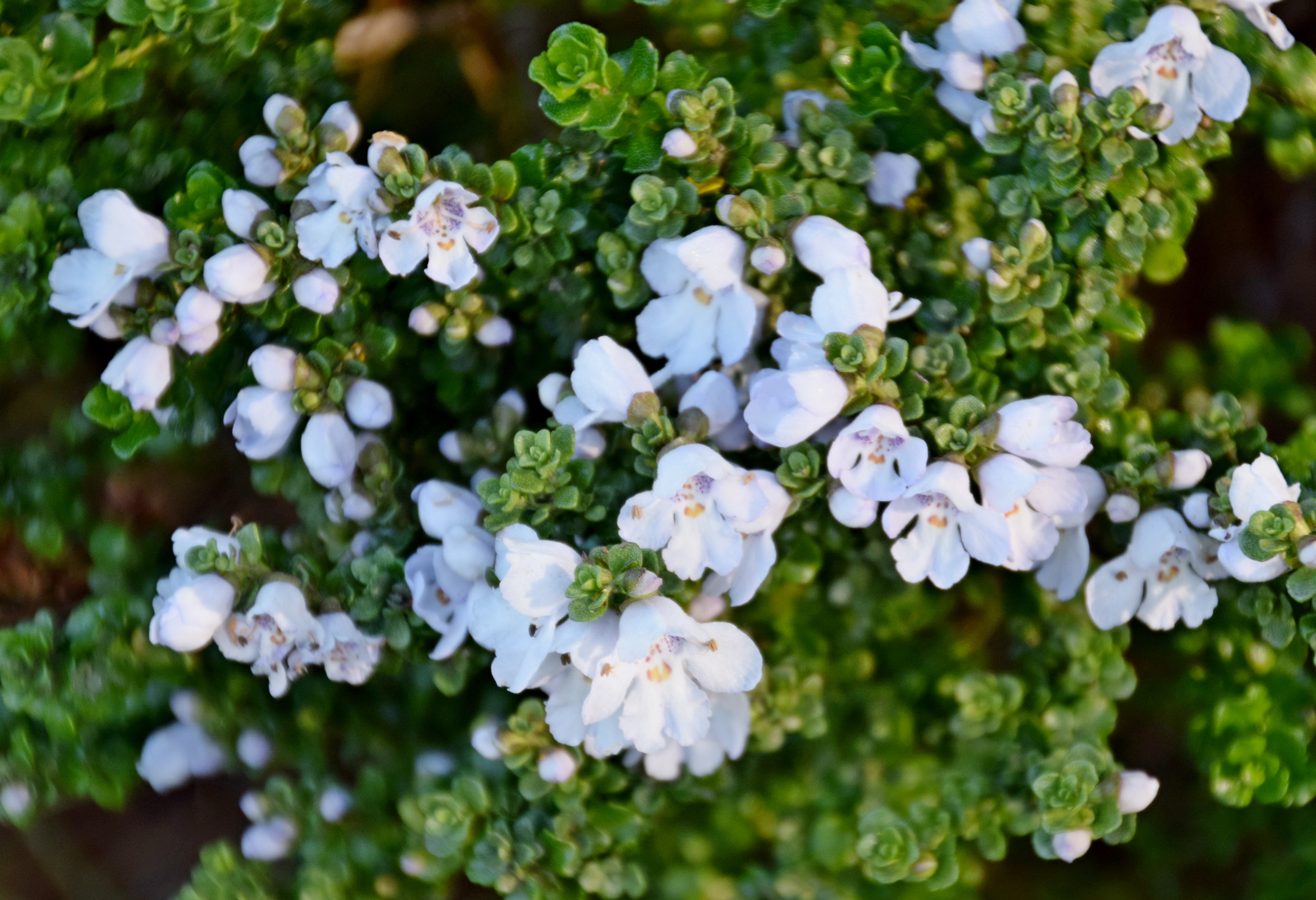This week I asked my co-worker Megan what her favourite plant was. She chose the Alpine Mint Bush (Prostanthera cuneata) which is an Australian evergreen shrub.

Interview with Megan

Me: So Megan, why did you pick this as your favorite plant? What do you like about it?

Megan: “In my Horticultural Program we learned about this plant and I instantly fell in love with it! It smells really nice, kind of like mint tea and eucalyptus. In the spring it blooms these beautiful white flowers with purple in the center. It is also an evergreen shrub which means it will last year round!”

Me: Why would it be a good option for people’s gardens?

Megan: “It is super easy and straightforward to take care of, very tolerant to most conditions. It is also a great alternative to other evergreen shrubs such as the boxwood, it just makes your space much more interesting! Another cool thing about it is that you can Bonsai it which can make for a fascinating project. As well as Bonsai, you can also use cuttings to propagate the plant to make it go even further! You can harvest parts of the plant for use, the smell is stronger than the taste, but you can use it for tea and add it to jams or jellies”

How to care for your Alpine Mint Bush
Sunlight:
- Choose a location that receives full sun to partial shade.
Soil:
- Plant in well-draining soil. The plant does not like to have wet roots so well-draining soil is very important
Watering:
- Water your mint regularly, especially during the first season. Once the plant is well established, it is moderately drought-tolerant.
- Try to water deeply, and allow the soil to dry out slightly between waterings. Do not overwater!
Pruning:
- You can prune the plant very lightly after flowering to encourage bigger and bushier growth.
Fertilizing:
- The plant doesn’t require too heavy of fertilization. Apply a balanced, slow-release fertilizer in the spring.
Harvesting:
- You can prune or pinch back the plant to harvest the leaves for edible or medicinal use. The leaves can be used to make herbal tea or add flavor to dishes.
Remember that planting more native plants can drastically help the environment and deter invasive species

Final Review
I had never heard of the Alpine Mint Bush before this interview, and I’m so glad Megan shared it with me! As a fellow plant nerd, I love to expand my knowledge and learn about lesser-known plants. I would absolutely consider planting this in a garden (or on my balcony) to add some year-round greenery and scent to my environment. Now that you know a little about this plant I hope you would consider planting it as well!

Leave a Reply
You must be logged in to post a comment.